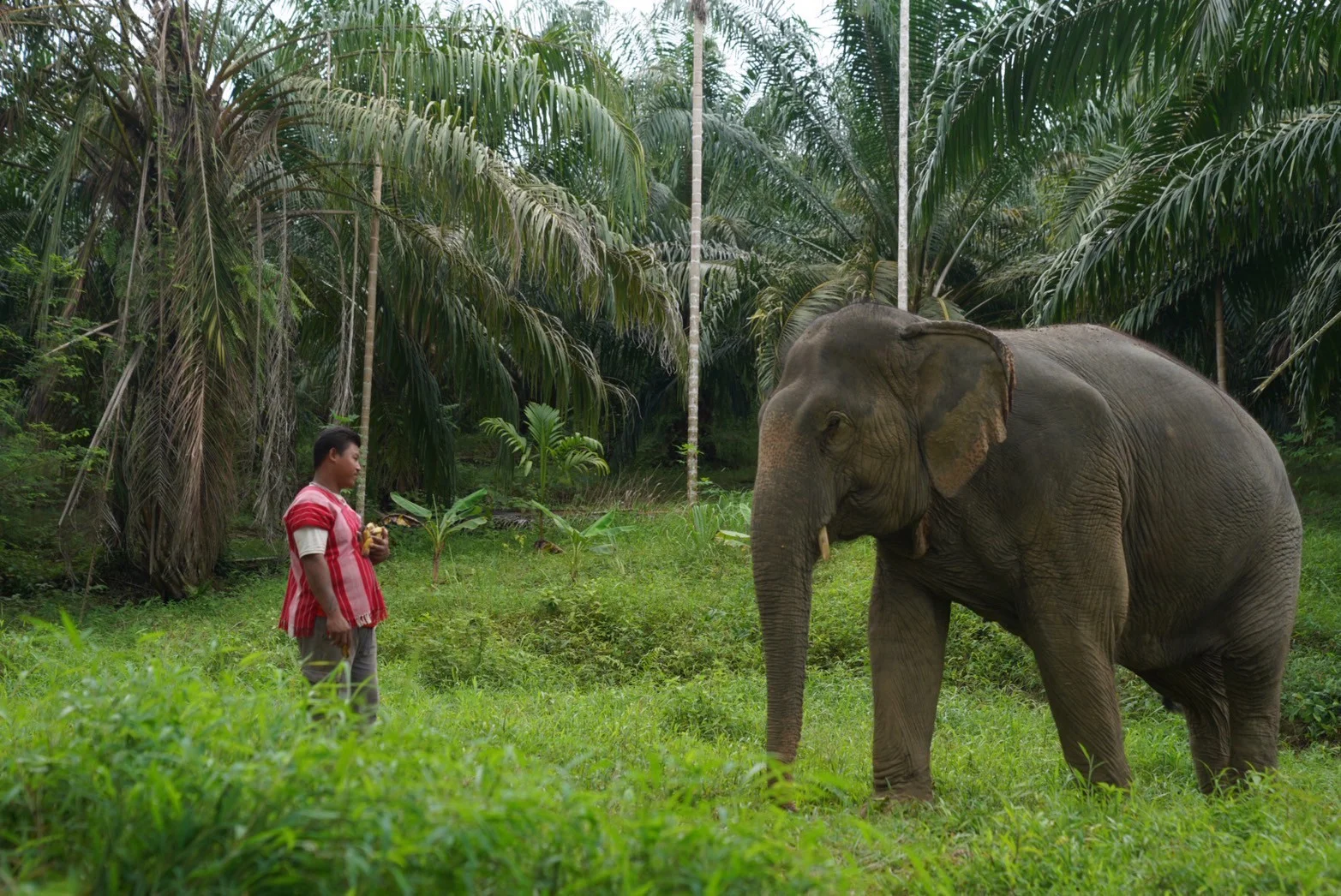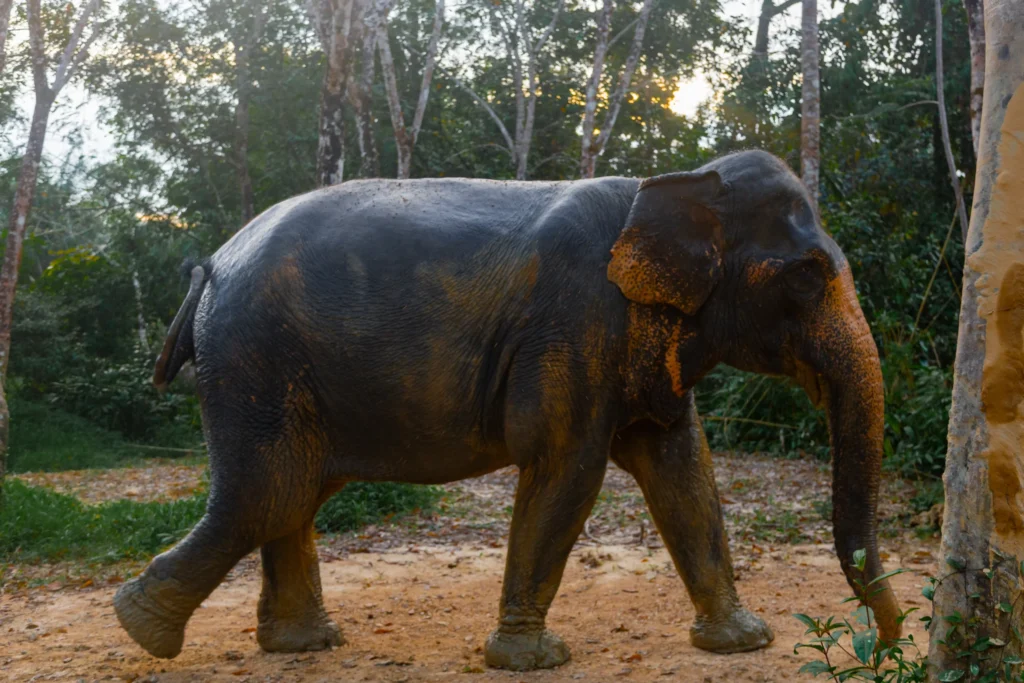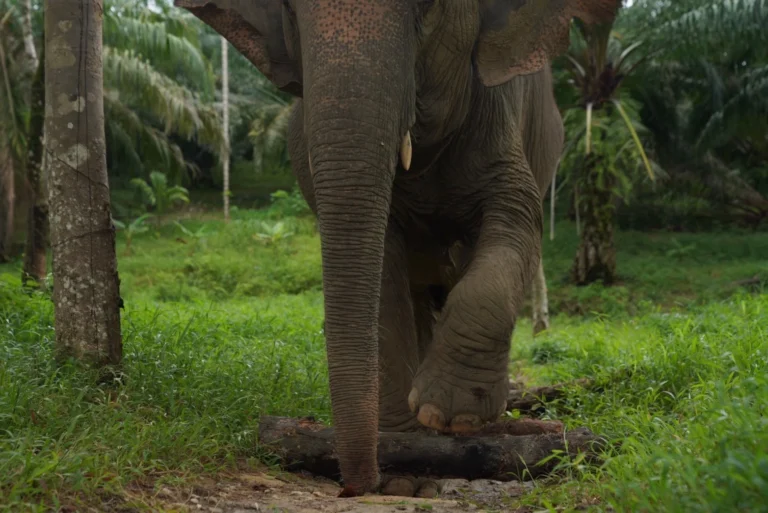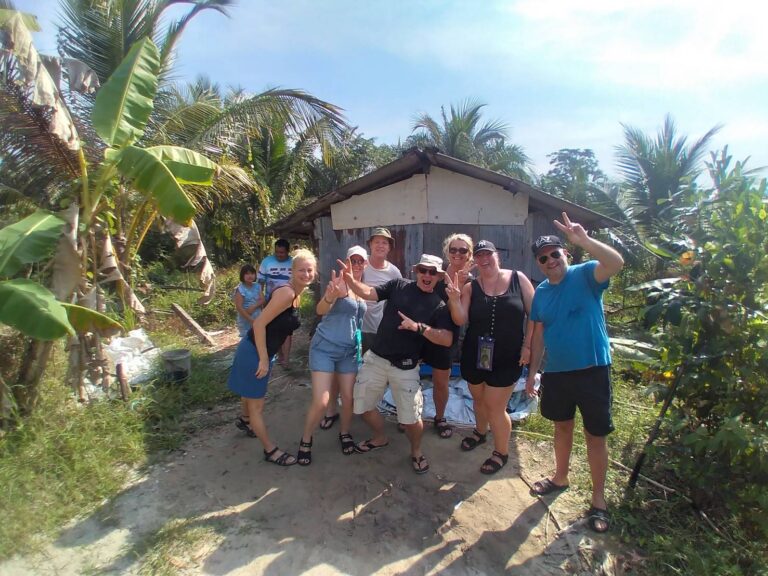1. No Riding, No Tricks
If a place lets you ride elephants or watch them perform tricks, it’s not a sanctuary. True sanctuaries never use elephants for entertainment. Riding causes long-term spinal damage, and circus-style shows strip away their dignity.
2. Limited, Respectful Groups
Ethical sanctuaries avoid overcrowding. Small groups — often fewer than 10 people — keep stress low and ensure elephants aren’t surrounded by constant noise or cameras. At Khaolak Elephant Sanctuary, we welcome a maximum of 5 guests per program for this reason.
3. Observation Over Interaction
Feeding, mudding, and bathing elephants might sound fun, but they put animals on a schedule for tourists. Instead, the best sanctuaries let elephants choose. Watch them forage, play in mud, or wander in the forest — without human interference.
4. Support for Local Communities
A real sanctuary doesn’t just protect elephants — it supports people too. Look for places that hire local staff, buy food from local farmers, and give back to the community. This creates long-term sustainability for both elephants and humans.
5. Transparency & Recognition
Awards, certifications, and independent recognition matter. They show that a sanctuary’s work has been reviewed by experts. Always check their website, read reviews, and look for transparency about elephant numbers, land size, and welfare standards.
Why It Matters
Every time you choose an ethical sanctuary, you vote with your wallet. You help break the cycle of abuse and create a future where elephants live free of exploitation. Traveling responsibly isn’t just better for the animals — it’s a deeper, more meaningful experience for you too.








